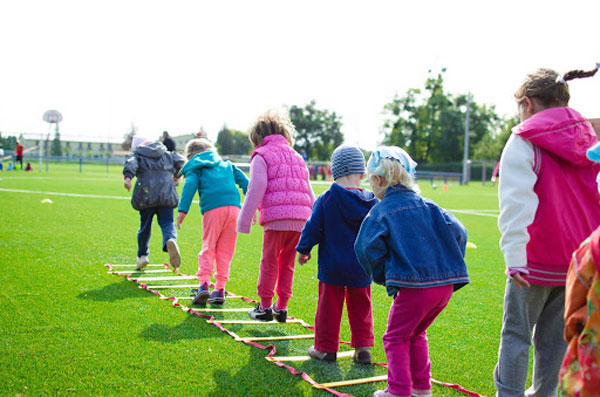
In a world where technology tends to dominate everyday life, it can be a constant struggle to ensure your children are active and healthy. The CDC recommends that children aged 6 to 17 years of age get at least one hour of physical activity each day for optimum health. It’s estimated that only 38% of children are currently reaching the daily minimum.
As a parent, it’s your responsibility to be proactive in helping your child be as healthy as possible. Here are some simple ways you can keep your child active and healthy.
Enroll in Extracurricular Activities
There are plenty of options when it comes to extracurricular activities for children. Whether it’s donning Just for Kix gear and heading to ballet class or strapping on a pair of skates and going to hockey practice, there’s an activity for every child. Find something that appeals to them and encourage them to try something new.
One of the challenges parents face in regards to extracurriculars is the cost. There are a few cost-saving options for parents on a budget. First, look for in-school sports or community-run organizations that are more affordable. Another option is to look for grants and subsidies that help pay for a child’s enrollment in a sport. Finally, taking a minimalist approach to gift-giving and asking family members to contribute to these endeavors rather than buying more toys can also be beneficial.
Teach Nourishment First
Eating healthy doesn’t have to be a full-time job. Don’t be pressured by other parents who promote entirely organic, never-processed, handcrafted lunches and snacks; just do the best you can. Teach your children nourishment first by encouraging them to fill up on healthy food before moving onto treats. Making simple swaps, such as carrot sticks instead of fries, is an easy way to ensure they’re getting the nutrients they need to grow and be active.
If you have a child who is less than impressed with the idea of eating healthy, empower them to get involved in the food selection process. Let them pick out a new fruit or vegetable they’d like to try and make healthy snack options readily available by keeping pre-cut fruit and veggies on the table for after school and removing processed snacks from their reach.

Limit Tech Time
There have been a lot of studies regarding how excess screen time impacts a child’s development. While it’s difficult to avoid technology entirely in the modern world, limits should be put in place to ensure your child is getting the physical activity they need. Removing technology and giving your child time for unstructured play can help them develop an active imagination, problem-solving skills, and social skills.
Set boundaries regarding the use of technology, whether it’s certain time periods or days. For example, on a rainy weekend day you might let your children have a bit more tech time than on a sunny summer day. Other parents choose to put a checklist in place that encourages other activities before tech use is allowed, such as chores, reading, physical activity, etc.
Work with the Weather
As much as it might seem unpleasant to go out in the rain or snow, viewing this weather as an opportunity to do something different will encourage a varied array of physical activity.
For example, putting on your rain gear and jumping in puddles can be fun for both you and your child. Having a family snowball fight in the winter can get everyone outside and active despite the weather. Teach your children that most days are good days to be active outside, even for an hour or so.
Model the Behavior
Gandhi once said, “be the change you wish to see in the world.” The same principle applies to parenting. One of the most challenging aspects of keeping your children active and healthy will be prioritizing your own health and wellness as well. By setting rules that apply to the whole family, your child will see you making an effort and want to emulate what you’re doing.
If they see you regularly making time to exercise, they’ll want to move more. If they see you putting down your phone and having tech-free time, they won’t feel that the request to turn off their video game is as unfair. Children learn from their parents; you need to model the behavior you wish to see.
Baby Steps
Change is hard for everyone, especially children who tend to be dependent on a routine. Rather than trying to implement a complete lifestyle change overnight, take a habits-based approach. Start making food swaps and maintain that habit for a few weeks before adding in tech time limits — work on getting your kids outside for 15 minutes, then 30, then an hour over time.
By layering habits, you create a sustainable approach to changing the routine. This prevents backsliding into your previous habits and offsets the stress of big changes for everyone. By starting to make these changes now, you’ll set your children up for success. Physical activity and wellness play a significant role in mental health, academic success, and living a long and healthy life.



























